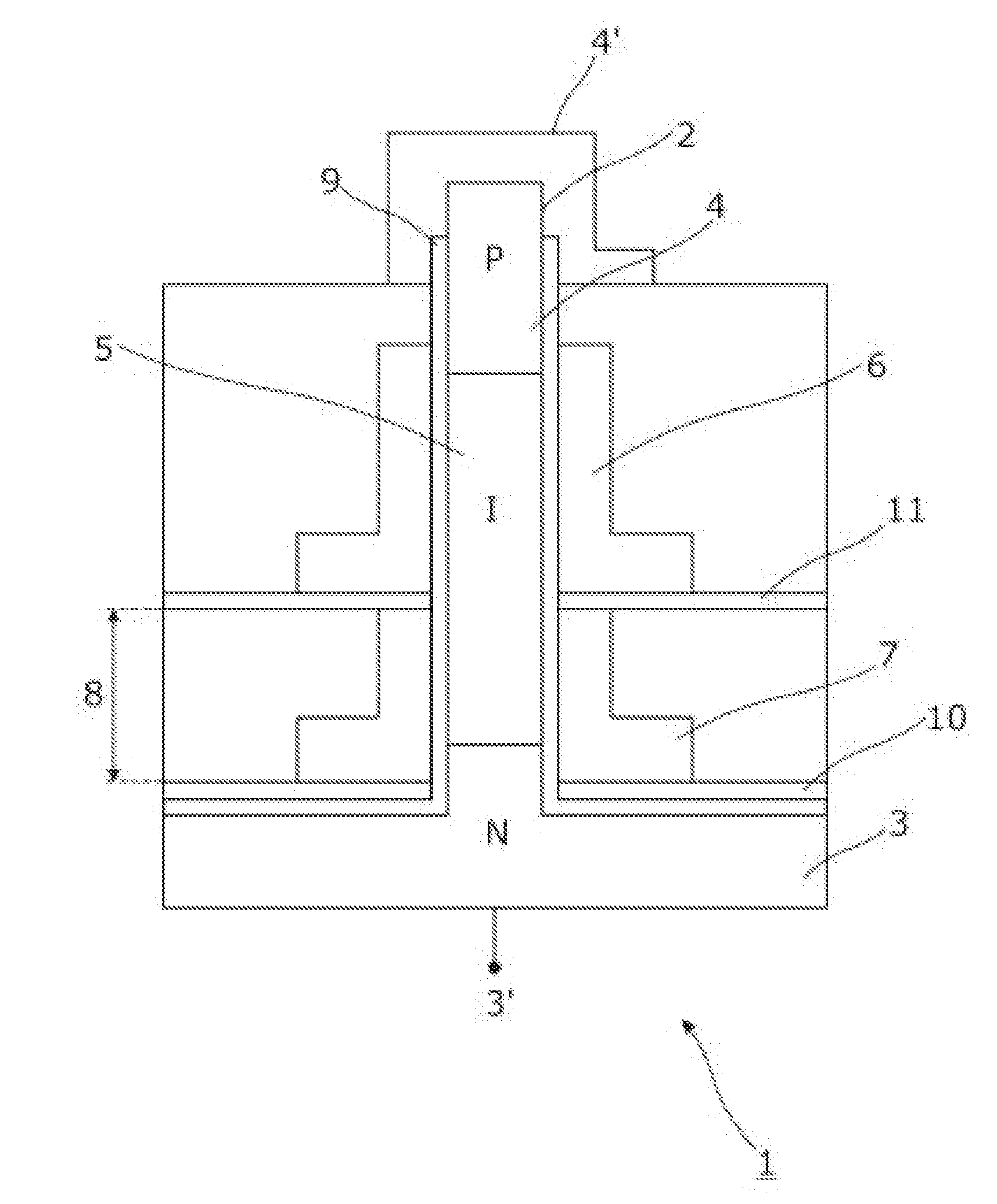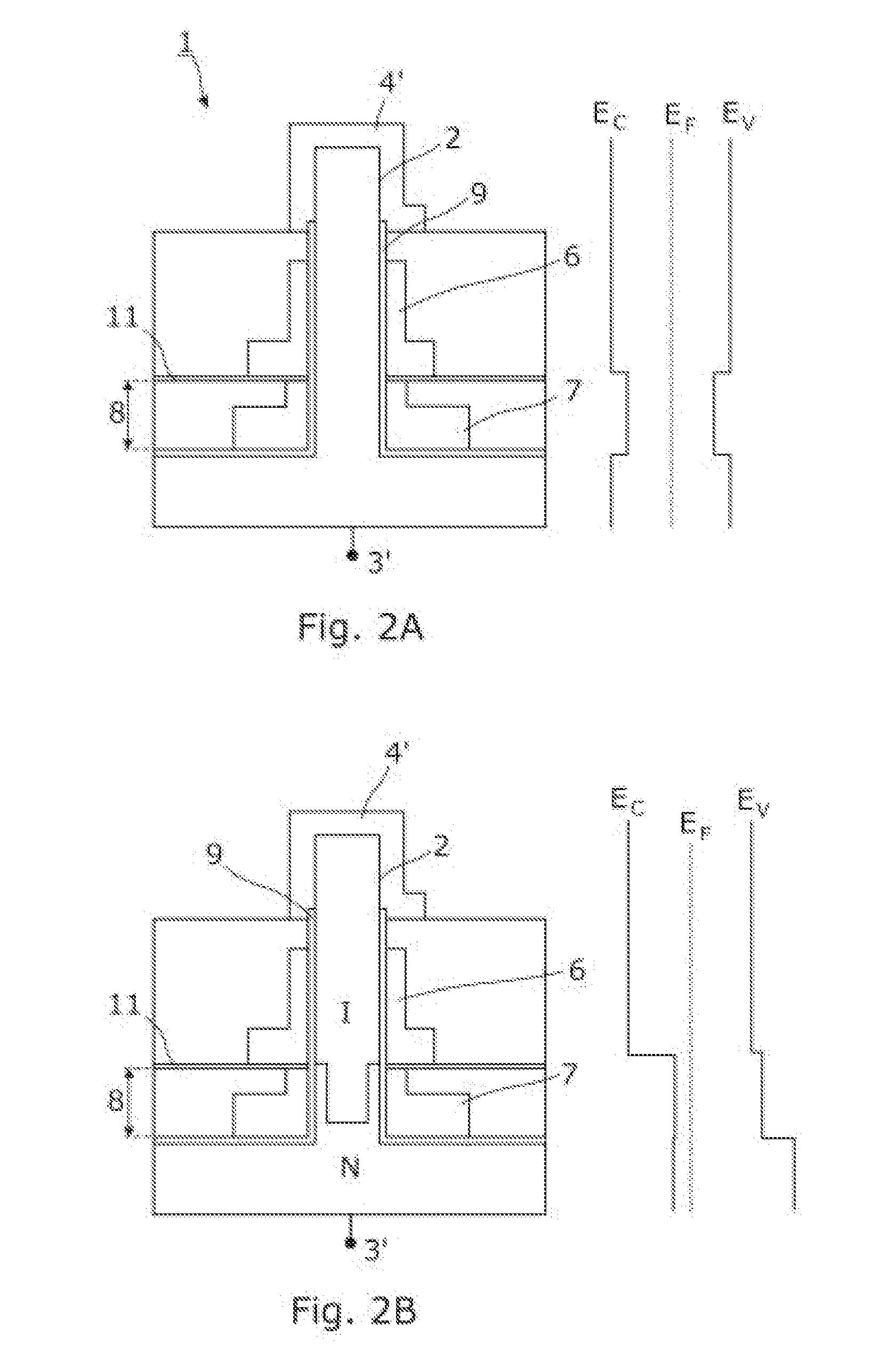Nanowire field-effect device with multiple gates
a field-effect device and nanowire technology, applied in the field of nanowire field-effect devices, can solve the problems of process incompatibilities and deterioration of the tunneling efficiency of carriers, and achieve the effects of reducing the band gap improving the tunneling efficiency of carriers, and reducing the barrier height of the tunnel junction between the source region and the channel region
- Summary
- Abstract
- Description
- Claims
- Application Information
AI Technical Summary
Benefits of technology
Problems solved by technology
Method used
Image
Examples
Embodiment Construction
[0028]Within the description, the same reference numerals or signs have been used to denote the same parts or the like.
[0029]Reference is now made to FIG. 1, which schematically illustrates an embodiment according to a device aspect of the present invention.
[0030]As can be seen from FIG. 1, an embodiment of the present invention comprises a tunnel FET 1 that may be implemented by way of a nanowire 2. In this particular example of an embodiment of the present invention, the nanowire 2 is substantially vertically aligned and grown / etched out of an intrinsic semiconductor substrate. The nanowire 2 is configured to have at least three distinct regions: at least a source region 3 comprising a corresponding source semiconductor material, at least a drain region 4 comprising a corresponding drain semiconductor material and at least a channel region 5 comprising a corresponding channel semiconductor material that is disposed between the source region 3 and the drain region 4. As can be seen...
PUM
 Login to View More
Login to View More Abstract
Description
Claims
Application Information
 Login to View More
Login to View More - R&D
- Intellectual Property
- Life Sciences
- Materials
- Tech Scout
- Unparalleled Data Quality
- Higher Quality Content
- 60% Fewer Hallucinations
Browse by: Latest US Patents, China's latest patents, Technical Efficacy Thesaurus, Application Domain, Technology Topic, Popular Technical Reports.
© 2025 PatSnap. All rights reserved.Legal|Privacy policy|Modern Slavery Act Transparency Statement|Sitemap|About US| Contact US: help@patsnap.com



